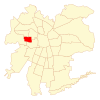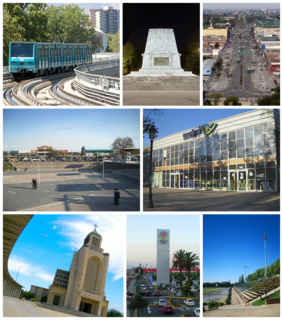
Maipú is a commune of Chile located in Santiago Province, Santiago Metropolitan Region, integrated into the Greater Santiago conurbation. It was founded on February 16, 1821 and it is the place of the Battle of Maipú, where Chile's independence was consolidated. Inhabitants are mostly part of a middle to upper-middle class young professionals.
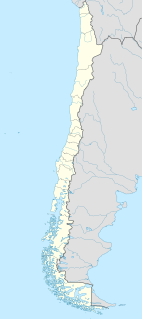
Lo Espejo is a commune of Chile located in Santiago Province, Santiago Metropolitan Region. It has the country's largest population density.
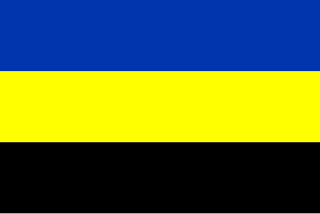
Cerro Navia is a commune of Chile located in Santiago Province, Santiago Metropolitan Region. It is one of the most densely populated communes of Santiago, Chile.

Conchalí is a commune of Chile located in Santiago Province, Santiago Metropolitan Region. It is a northwestern suburb of Santiago.

Huechuraba is a city and commune of Chile located in Santiago Province, Santiago Metropolitan Region.

Independencia is a commune of Chile located in Santiago Province, Santiago Metropolitan Region. The main street is Independencia Avenue.

La Pintana is a commune of Chile located in Santiago Province, Santiago Metropolitan Region. La Pintana is home to Antumapu, the agricultural and veterinary sciences campus of University of Chile, Chile's oldest university.

Pudahuel is a commune of Chile located in Santiago Province, Santiago Metropolitan Region. Santiago's international airport Comodoro Arturo Merino Benítez is located there.

Quinta Normal is a commune of Chile located in Santiago Province, Santiago Metropolitan Region. It is named after a large park in the area.
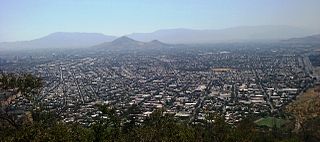
Recoleta is a commune of Chile located in the north of Santiago Province. It belongs to the Santiago Metropolitan Region which is the capital and seat of the executive branch. It is south of Huechuraba, east of Independencia and Conchalí, west of Providencia and Vitacura, and north of Santiago. The Mapocho River and the San Cristóbal Hill form the natural boundary on the south and east sides, respectively, of Recoleta.

Renca is a commune of Chile located in Santiago Province, Santiago Metropolitan Region. It was founded on May 6, 1894.

Melipilla is a Chilean commune and capital city of the province of the same name, located in the Santiago Metropolitan Region southwest of the nation's capital. The commune spans an area of 1,344.8 km2 (519 sq mi).

Buin is a city and commune of Chile, in the Maipo Province, Metropolitan Region of Santiago, which forms part of Greater Santiago. It is a city composed of the towns of Maipo, Viluco, Linderos, Valdivia de Paine, Alto Jahuel, Los Guindos and El Recurso. Buin is located about 35 km (22 mi) south of Santiago in the Maipo Valley wine region.

Paine is a Chilean city, forming part of Greater Santiago, and a commune in the Maipo Province, Santiago Metropolitan Region.

Padre Hurtado is a Chilean commune in the Talagante Province, in the Metropolitan Region. Part of the Greater Santiago conurbation and one of the outermost communes of it, the commune is named after Saint Alberto Hurtado, who was popularly known as Padre Hurtado.

Estación Central is a commune of Chile located in Santiago Province, Santiago Metropolitan Region. Its namesake is the Estación Central railway station located in the commune.

Calera de Tango is a Chilean commune in the Maipo Province, Santiago Metropolitan Region.

Curacaví is a city and commune in the Melipilla Province of central Chile's Santiago Metropolitan Region. Its climate is temperate Mediterranean with a long dry season, experiencing high temperatures in summer and low temperatures in winter. Curacaví is located on the Ruta 68 between the coastal conurbation of Viña del Mar and Valparaíso and Santiago which has proved a popular home for expats working in Santiago.

Talagante is a commune and the capital city of the province of the same name in the Santiago Metropolitan Region of central Chile. The word Talagante in Quechua comes from talacanta, meaning "Lazo de Hechicero", which was the proper name of the curaca, or ruler, who dominated this central valley on behalf of the Inca empire during the arrival of the Spaniards.

Peñaflor is a city and commune of the Talagante Province in central Chile's Santiago Metropolitan Region.


